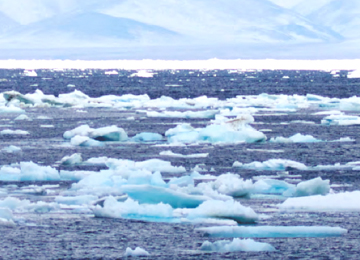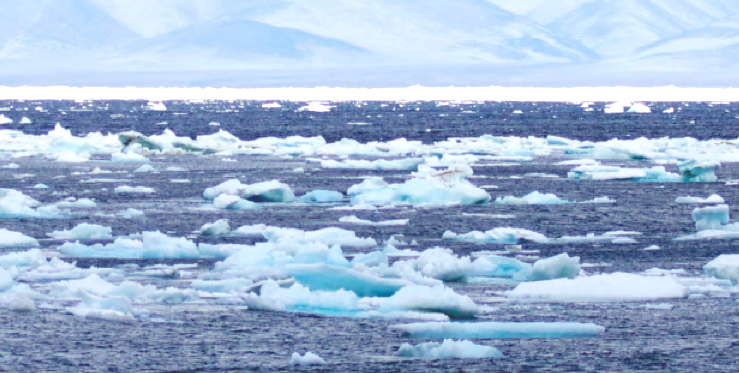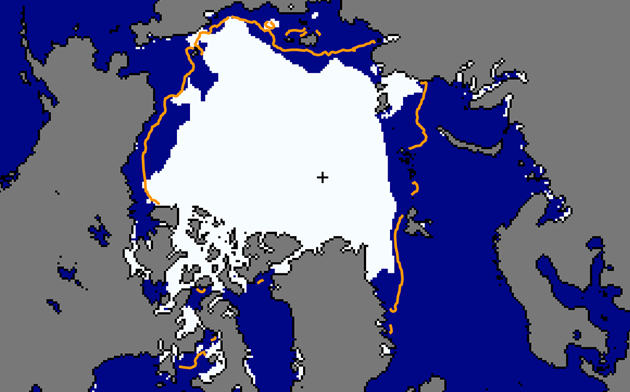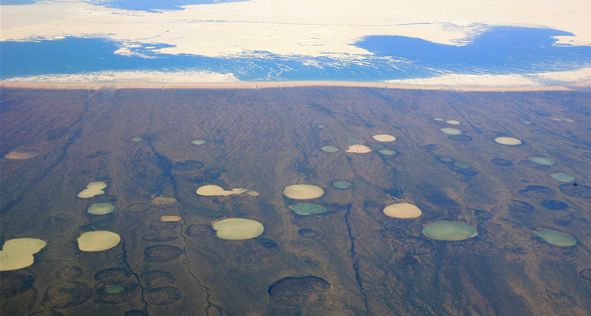

TckTckTck
“The record or near-records being reported from year to year in the Arctic are no longer anomalies or exceptions. Really they have become the rule for us, or the norm that we see in the Arctic and that we expect to see for the forseeable future” – Jackie Richter-Menge, U.S. Army Corps of Engineers.
Last week’s State of the Climate report confirmed it: Ice is melting in the Arctic at one of the fastest rates in human history. Researchers and climate scientists monitoring ice melt in the Arctic have started using the ominous term “death spiral” to describe what’s happening at the top of the world. But what does it mean? And is it as scary as it sounds?
First Things First: What is a Death Spiral?
In aviation, a death spiral or graveyard spiral happens when an inexperienced pilot is unable to use properly spatially orient their plane in flight and falls into a spiral dive. The plane will rapidly lose altitude, falling to the ground in tighter and tighter circles. Once in a spiral or spin, it can be very difficult for a pilot to regain control of the plane—hence the term, death spiral.
How Do We Know That Arctic Ice is in a Death Spiral?
A certain amount of ice melt is expected during the summer season, which wouldn’t have been a problem a few decades ago. Winter storms and cold would replenish the ice lost over the summer, keeping the total amount of ice in the Arctic relatively stable.
Now, the total volume of ice in the Arctic shrinks all year long, with rapid melt periods during the summer. Every year the total volume of ice in the Arctic gets smaller and smaller—just like the tighter and tighter circles of a death spiral. The melt is happening so quickly, some researchers believe it’s possible we’ll see a summer with an ice-free Arctic as early as 2015.
“The loss of Arctic summer sea ice and the rapid warming of the Far North are altering the jet stream over North America, Europe and Russia. Scientists are now just beginning to understand how these profound shifts may be increasing the likelihood of more persistent and extreme weather.” – Jennifer Francis, Rutgers University climate scientist.
How Much Ice are We Talking About?
According to the National Snow and Ice Data Centre, Sea ice extent for July 2013 averaged 8.45 million square kilometers (3.26 million square miles). This is 1.25 million square kilometers (483,000 square miles) below the 1981 to 2010 average for the month.
During July, the ice melted at a rate of 105,000 sq kilometers (41,000 miles) every single day.
What Kind of Impacts Does this Rapid Melt Have Right Now? In the Near Future? The Long Term?
Right now, the Arctic ice plays an important role in helping regulate the Earth’s temperature. White ice cover reflects sunlight back into the atmosphere, helping to keep the northern hemisphere cooler than it would be if the sunlight were absorbed by surface water.
The immediate impact of smaller ice cover in the Arctic means more surface water is exposed and can absorb sunlight rays. This warms up the temperature of the northern hemisphere, which in turn increases the rate the Arctic ice melts.
Future potential effects could be grim. As Nafeez Ahmed wrote in The Guardian this May:
Extreme weather events over the last few years apparently driven by the accelerating Arctic melt process—including unprecedented heatwaves and droughts in the U.S. and Russia, along with snowstorms and cold weather in northern Europe—have undermined harvests, dramatically impacting global food production and contributing to civil unrest.
U.S. national security officials have taken an increasing interest in the destabilising impact of climate change. In February this year, the U.S. Department of Defense released its new Climate Change Adaptation Roadmap, which noted that global warming will have “… significant geopolitical impacts around the world, contributing to greater competition for more limited and critical life-sustaining resources like food and water.”
There’s also the risk of potential implications from melting permafrost, which could impact everything from greenhouse gas emissions, to Arctic biodiversity to road construction. The team at the National Snow and Ice Data Centre have a good blog on the subject, but this paragraph on the methane stored in melting permafrost deserves reposting:
While local effects of thawing permafrost are worrisome, the sheer amount of carbon that could be released in the future concerns everyone. Scientists estimate that Arctic permafrost contains nearly 1,700 billion tons of carbon, about twice the carbon currently in the atmosphere. Methane is over 25 times more potent at retaining heat than its carbon dioxide counterpart. In addition, carbon dioxide released due to thawing permafrost is a phenomenon only recently discovered and could convert Arctic carbon into carbon dioxide much more quickly than previously thought.
What Can We Do?
A lot! The first, and most important thing you can do is to support efforts by environmental organizations to protect and preserve the Arctic. As the ice melts, companies and governments will want to find new routes for shipping their goods across the Arctic circle. Oil companies will want to drill for buried oil or natural gas deposits. The more we look at the Arctic as a resource to be exploited, the more carbon dioxide we release, the more the planet warms and Arctic ice cover shrinks. Regardless of any financial or economic benefits it may hold, we cannot allow this to happen.
Educate Yourself: If you’re like us at all, the more you learn about melting Arctic ice, the harder it becomes not to tell everyone you know about it. A good place to start is by holding a screening of Chasing Ice, a documentary on rapid ice melt in the Arctic. Watch the trailer below:
[youtube //www.youtube.com/embed/eIZTMVNBjc4?rel=0 expand=1]
Join the Movement: 3.6 million people have signed Greenpeace International‘s petition to Save the Arctic and push world governments to turn it into a world park, like Antarctica. If you haven’t already, add your name here.
Reduce Your Personal Support of Fossil Fuels: Our Executive Director Kelly Rigg recently summed up five of the most important things you can do personally in the fight against global climate change, including buying climate bonds, ensuring your mutual funds or pensions don’t support companies that contribute to carbon dioxide pollution and supporting projects that crowdfund renewables.
Visit EcoWatch’s CLIMATE CHANGE page for more related news on this topic.
——–

 233k
233k  41k
41k  Subscribe
Subscribe 




